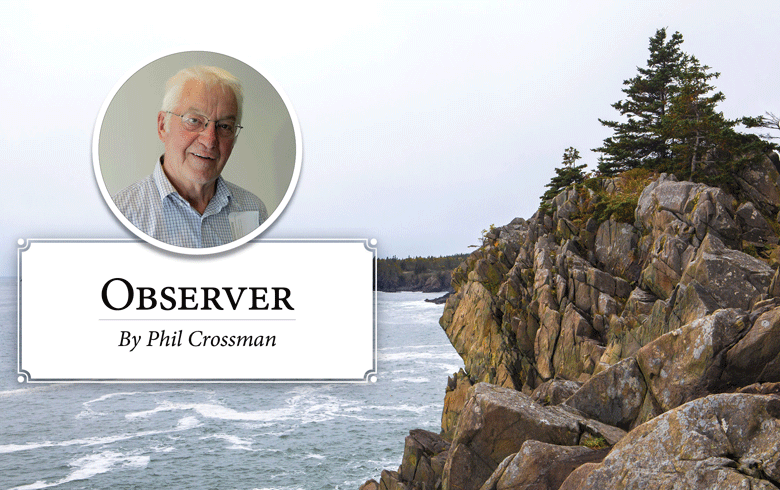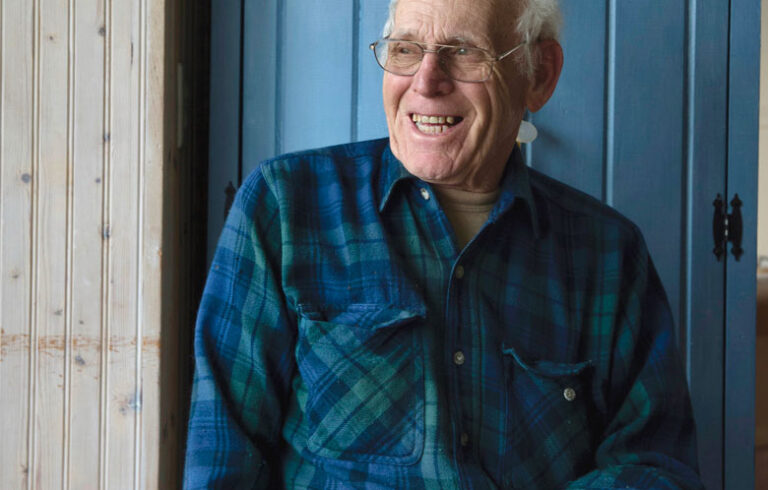Not long ago—well, I guess that just because I remember it doesn’t mean it wasn’t long ago—Vinalhaven’s downtown was an architectural wonderland, lorded over by three Second Empire Victorian structures, each three stories, and a fourth building, marginally more magnificent, but lacking the Victorian’s mansard.
This fourth edifice was the Memorial Hall. Our lovely post office—an antiquity in retrospect, with brass mailbox doors, each about 5-inches by 7-inches with a little window so one needn’t waste time getting access if there was no mail—took up half its ground floor. A retail space occupied the other half.
There was no third floor, the ceiling of the second floor extended to the roof, gifting us with a stately meeting/function/dance hall/theater, complete with a commanding proscenium, full wings, sound, lights, and ample space backstage.
Those noble missions were particularly important in communities where dangerous occupations were prevalent.
It was so memorably and so continually alive—orchestras, ballroom dances, and theatrical productions. Memorable town meetings there were all day affairs, complete with dinner, or lunch, as some would call it today. The Memorial Hall reposed where today’s brick post office languishes, flanked by the Oddfellows Hall (Star of Hope) to the east.
In 1820, a couple of simple two-story gable-end structures, side by side, stood where the beautifully, though only partially restored, Oddfellows Hall is today, each occupied by essential retail of the time: perhaps Millinery & Fancy Goods or Stoves & Tinware.
The Independent Order of Oddfellows was formed in 18th century England, it’s mission “to visit the sick, relieve the distressed, bury the dead and educate the orphan.” Fraternal organizations such as the Masons, Knights of Templar, Commandry, and Oddfellows took root quickly in the United States during the 19th century for obvious reasons—all offered the essential fellowship that couldn’t be found elsewhere and each also had a mission not unlike that of the Oddfellows.
Those noble missions, essentially looking after those in distress, were particularly important in communities where dangerous occupations were prevalent. In Vinalhaven those were certainly granite quarrying and fishing, each too frequently resulting in crippling injury or death.
The Vinalhaven branch of Oddfellows held its first meeting in November 1874 in one of these two structures. A decade later, the lodge had grown to such an extent that a larger space was called for. Alexander Currier, an architect employed by the Bodwell Granite Company, was engaged to create the Oddfellows Hall we know today and he went all out. The result, while having ill-advisedly incorporated the two structures, was a magnificent Second Empire Mansard that featured several intriguing spaces including “The Hall,” the group’s ornate third floor meeting space, accessed by modestly secretive passages. The ground floor continued to house varied retail.
The Oddfellows abandoned their charter in the 1960s and the building was purchased by well-known photographer Eliot Elisofon around 1970. At the time, it was in very rough shape. Eliot rented and then sold it to Robert Indiana who engaged a great deal of work improving its function and appearance inside and out.
After Indiana passed, the Star of Hope Foundation—an artist-endowed foundation created by his will and left with the continued care of the building—contracted Rockport Building Partners to conduct a structural analysis which revealed that the building was not far from complete collapse, due in part to the poorly incorporated two original buildings.
The same firm was engaged to undertake restoration and the result—that which we can all see and appreciate—is quite spectacular, although a great deal of work, beyond the facade remains to be done.
In 1981, the Star of Hope was included in the National Register of Historic places.
Phil Crossman lives on Vinalhaven. He may be contacted at PhilCrossman.vh@gmail.com.





